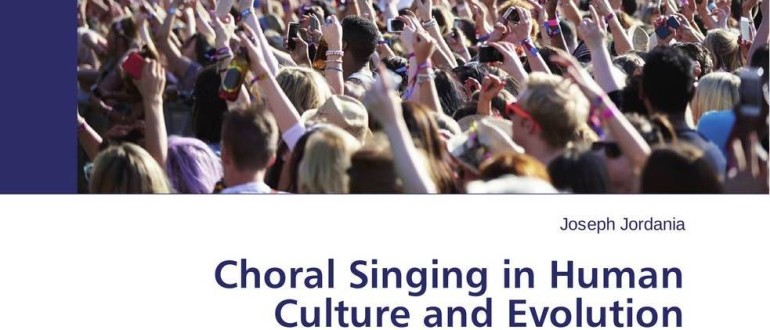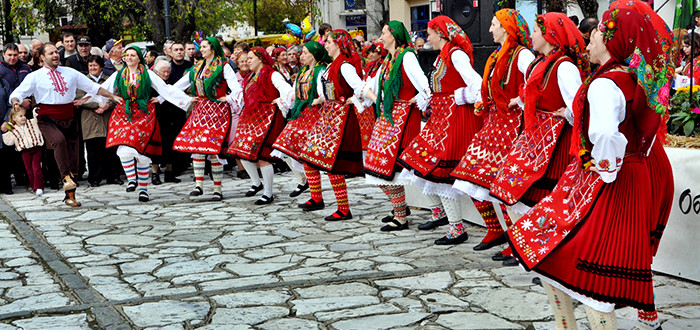Japan: Ainus
Arguably the most isolated tradition of vocal polyphony in the world is in eastern Asia, among the Ainus from the northern Japan and Kuril islands. Ainu ethnic, linguistic and even racial origins are much debated. The first Europeans who met the Ainus wrote that they looked like Finns. Later scholarly research confirmed the unique features of Ainu language and race. As arguably the first dwellers of this region (Sakhalin, Kuril Islands and particularly Hokkaido in Japan), the Ainus constitute the substrata of the Japanese.
About 20.000 Ainu live in northern Japan (mostly on Hokkaido) today. Only about one hundred of them can actually speak the Ainu language. After a five-year research program, conducted by the Japan Broadcasting Association in the beginning of the 1960s, about two thousand Ainu traditional songs were recorded. A 600-page volume “Music of the Ainu” containing about 500 transcribed pieces of music was published in Japanese with a small English summary (Kazuyuki, 1965).
The traditional polyphony of Ainu is based on canonic imitation of relatively short musical phrases. According to Kazuyuki (1965, 1975), out of thirteen different genres two are the most important: upopo (round, sung in a canon by elders sitting in a circle), and rimse (round dance, only very rarely sung as a canon). There is an interesting and complex interaction between these two genres: “The way in which these songs are handed down is in disorder today, and many songs are sung equally as upopo and rimse. Even in such instances, however, rimse is rarely sung in canon. Imitation is a significant criterion for judging rimse and upopo. The latter is sung imitatively by several people seated round the lid of a chest, tapping the rhythm on the lid. Usually the lead is taken by the oldest member of the group. The leader turns his face towards a man sitting at his right, and on a cue this man starts singing a beat behind. This continues until the last man sings while the rest go on singing. Thus the whole sound becomes chaotic and the sounds comply with the etymology of the word ‘upopo’, noisy singing like birds twittering. The whole process is repeated several times, and then the leader starts another song in like manner. The falsetto (pon) singing at the beginning of the song is very distinctive, and its effect is like lighting candles one after another in the dark. Upopo and rimse were originally the same as their etymology suggests; they only gradually achieved separate identities. The rimse became a dancing song, and the upopo became an imitation sitting song” (Kazuyuki, 1975:63).
Romania
Most Romanian traditional vocal music is monophonic (solo or unison), although there are some “rudimentary forms of heterophony and polyphony” in some regions in some p ains sung by girls during evening working parties (Bihor); and children’s songs connected to different dance-games, found all over the country” (Apan, 2000:879). the most developed traditions of polyphonic singing in Romania. Their songs are always performed by two groups in antiphon, either in unison or in polyphony. G. Marcu distinguishes two vocal polyphonic styles among Macedonians in Romania: the first one is connected to “Pinderi” (Macedonians from the Pindul mountains) a Gramusteni” (mostly from Epir – northern Greece), and the second one is connected to “Farsheroti”, a shepherd population from North Greece and the Albanian district of Corcea. In the first style most of the singers sing the main tune in unison (or heterophonic) style. The rest sing the second part (often the drone). In both styles t ation of parts is often based on dissonant “barbarian” intervals (Dumitrescu, 1977:12).
Joseph Jordania
Maps and musical examples for book Choral Singing in Human Culture and Evolution
You can find here 15 maps of distribution of various styles of traditional polyphony in Europe and the world, a map of distribution of stuttering in the world, and also 49 musical examples from various world cultures. These maps and musical examples are complementary to Joseph Jordania’s book “Choral Singing in Human Culture and Evolution” (Lambert Academic Publishers, Saarbrucken, 2015).
Evsevi (Kukuri) Chokhonelidze
The Modal Characteristics of Georgian Folk Song
Georgian folk musical culture has a century-old history. Until today the Georgians have preserved songs from various historical times. It looks like the people of Georgia have passed these songs to the present-day generation from the distant past, the fact which raises great scholarly interest. Georgian folk song has absorbed diverse musical-stylistic streams, all of which reflect the musical thinking of various historical epochs.
Manana Shilakadze
Ethnologist, Doctor of Historical Sciences, Professor. She graduated the faculty of History at the Tbilisi State University (1962). She has worked at the I. Javakhishvili Institute of the History and Ethnology of the Georgian Akademy of Sciences (1962-2006). She has published about 100 scientific articles in Georgian, Russian and German languages. She is the author of several books. The main field of her research was the Georgian-Northern Caucasian ethnocultural relationships, the written sources of the Middle Ages about the Georgian musical culture.
Austria. 2005
An international symposium “European voices: Multipart singing in the Balkans and in the Mediterranean” was helded from March 11-13, 2005. The symposium was organized as a joint venture of the Institut fur Volkcmusikforschung und Ethnomusikologie, the Universitat fur Musik und darstellende Kunst Wien, the Osterreichisches Nationalkomitee im ICTM, and Wiener Konzerthaus. A research centre of European traditional polyphony was established (Ardian Ahmedaja, Gerlinde Haid). Organisers of the symposium are planning to publish the full papers. According to the published abstracts, the following papers were delivered:
Results of the discussion of symposium abstracts
The deadline of the registration for the 8th International Symposium on Traditional Polyphony expired on 15 April, 2016; On 25 April Symposium Program Committee announced results of the discussion of abstracts.
55 scholars have been selected to participate in the 8th symposium to be held at Tbilisi State Conservatoire on 26-30 September, 2016; of these 32 foreign scholars from 17 countries of the world and 23 Georgian scholars.
Results of the discussion of symposium abstracts
The deadline of the registration for the 8th International Symposium on Traditional Polyphony expired on 15 April, 2016; On 25 April Symposium Program Committee announced results of the discussion of abstracts.
55 scholars have been selected to participate in the 8th symposium to be held at Tbilisi State Conservatoire on 26-30 September, 2016; of these 32 foreign scholars from 17 countries of the world and 23 Georgian scholars.
Russia
Even after the break-up of the Soviet Union, Russian Federation remains easily the largest country of our planet, comprising major parts of the East Europe and the entire North Asia. Regarding the sheer size of Russian Federation and the wide distribution of ethnic Russians (with subsequent close contacts with totally different cultures of Europe and Asia) it is clear that all the generalizations about Russian traditions of polyphonic singing cannot be exhaustive. We will first discuss polyphonic traditions of ethnic Russians in both (European and Asian) regions.
The study of traditional polyphony in Russia has quite an extraordinary and somewhat paradoxical history. Today Russian traditional music is widely known for its rich polyphony, but during the first few decades of development of Russian musicology (roughly the second part of the 19th century) it was mostly believed that Russian music was monophonic. Influential Russian musical critic Vladimir Stasov (1824-1906) famously declared that to verify “Russianness” of a song, the song must comply to the following two conditions: (1) it should be playable on black keys of the piano only (pointing to the pentatonic character of scales) and (2) it should be playable (on a piano again) with one finger only (pointing to the monophonic character of Russian traditional music).
Call for papers of the 8th Symposium for Traditional Polyphony
International Research Center for Traditional Polyphony of Vano Sarajishvili Tbilisi State Conservatoire and the International Centre for Georgian Folk Song are pleased to announce that The scholars working on the problems of polyphony are invited to participate in the 8th International Symposium on Traditional Polyphony will be held on 26-30 September, 2016, in Tbilisi, Georgia.
Please, carefully read the TIMLINE section and pay
attention to the on-line form of CONFIRMATION OF ACCEPTANCE
Call for papers of the 8th Symposium for Traditional Polyphony, Tbilisi, 26-30 September 2016






